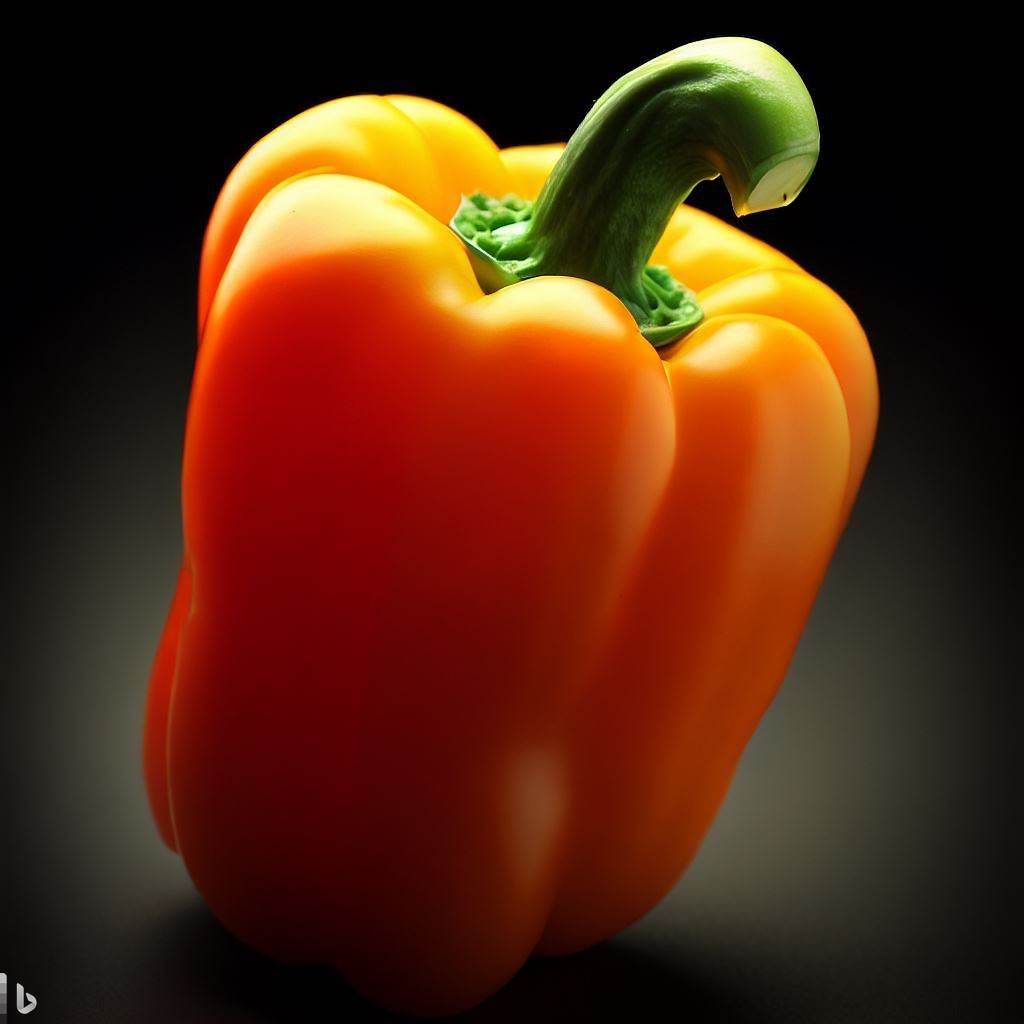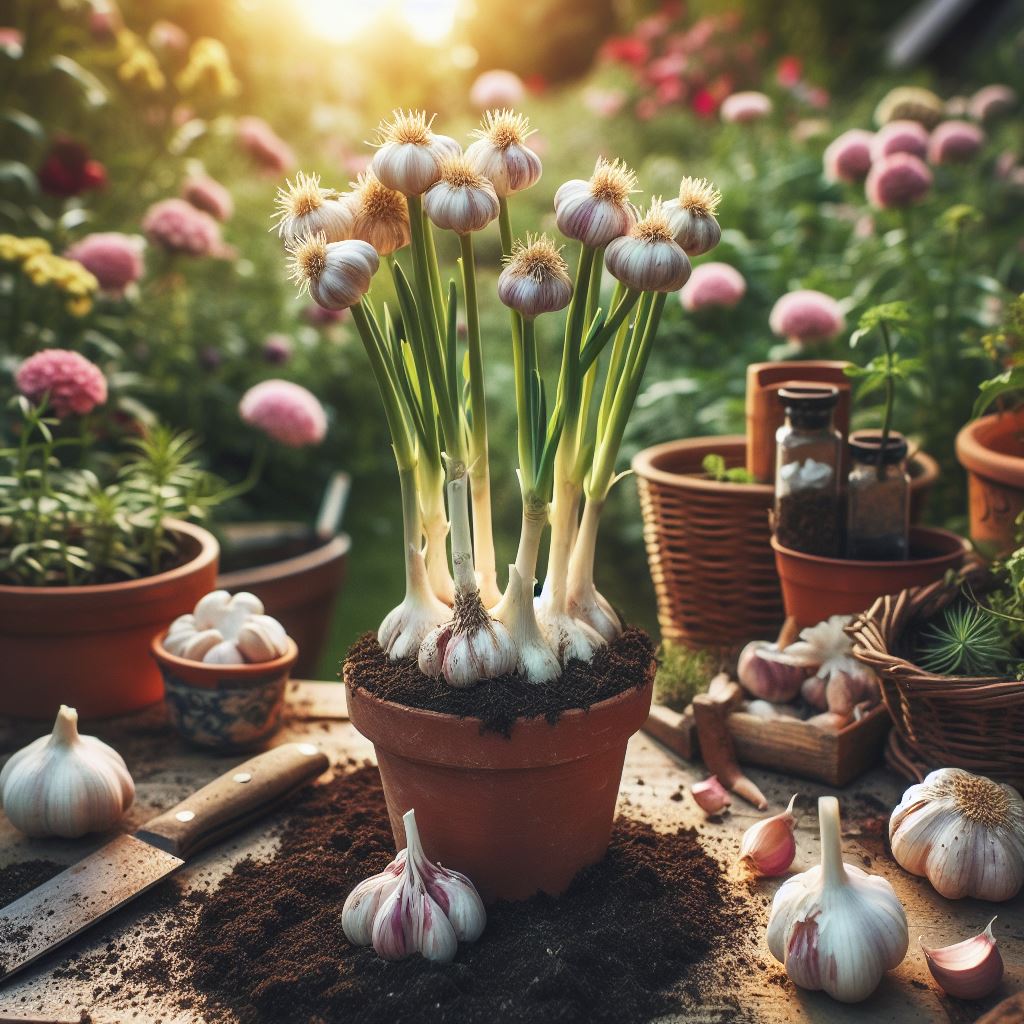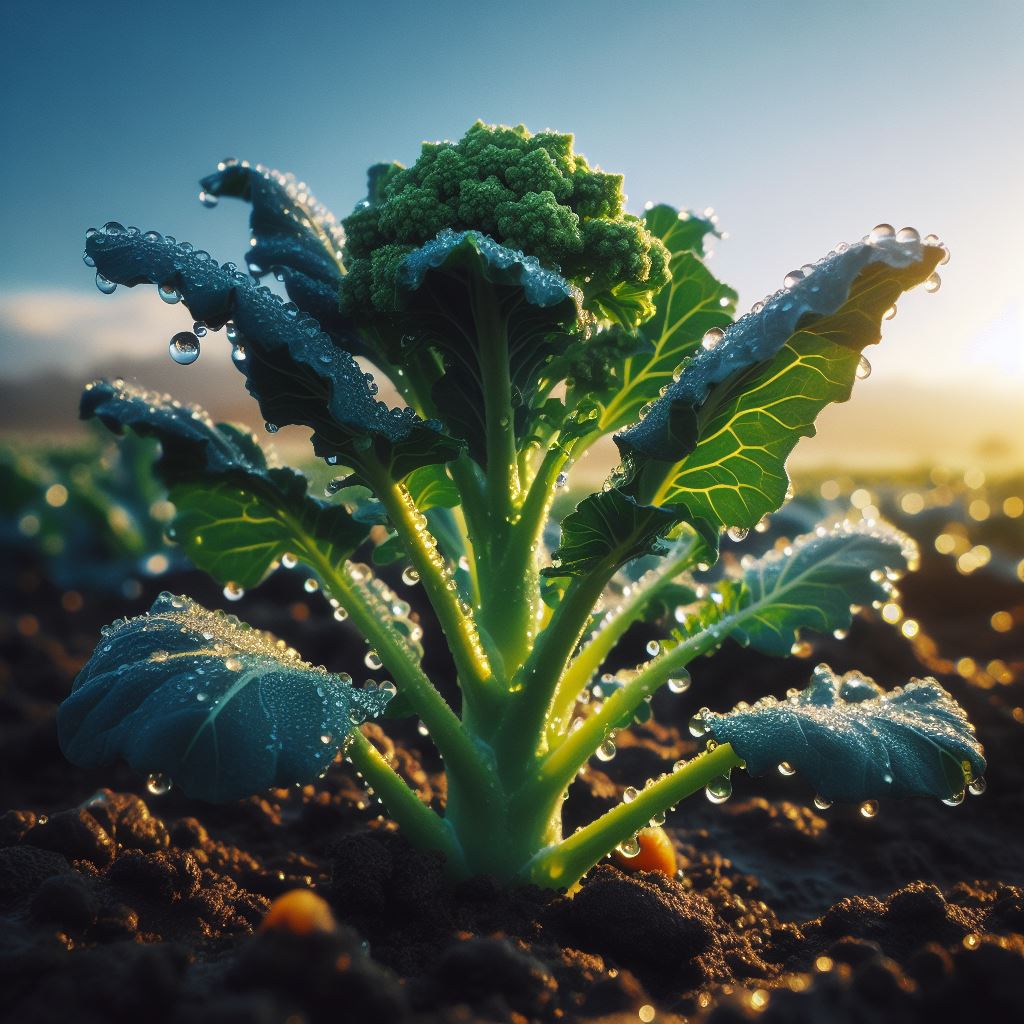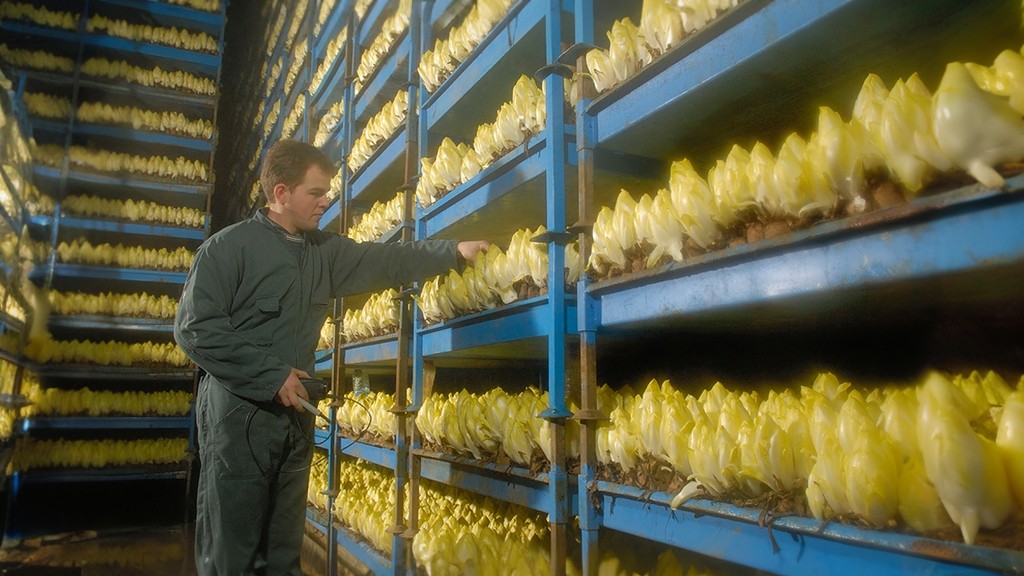Introduction of Bell Peppers?
Bell peppers, also known as sweet peppers oricum, are not only colorful and versatile in culinary applications, but they also offer numerous health benefits. Packed with essential nutrients, bell peppers are an excellent source of vitamins A and C, as well as potassium and fiber. Incorporating bell peppers into your diet can support the immune system, improve eye health, and promote overall well-being. Whether you’re a gardening enthusiast or simply someone who loves to experiment in the kitchen, mastering the art of bell pepper cultivation is a rewarding endeavor that allows you to enjoy the freshest and most flavorful produce right at home.
How to cut a bell pepper
- Rinse the bell pepper carefully under flowing water to eliminate any dirt or residue.
- Place the bell pepper on a cutting board and use a sharp knife to cut off the stem or cap. This will create an opening for you to remove the core and seeds.
- Gently pull out the core and shake out any loose seeds. You can also use a spoon to scoop out any remaining seeds if needed.
Now you have a bell pepper with one open end. Decide how you want to cut it based on your recipe or preference.
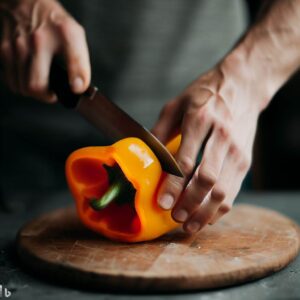
Here are two common methods:
Slicing
Stand the bell pepper upright on the cutting board and make a vertical cut to create one large flat piece. Then, continue slicing the pepper into desired shapes such as strips, rings, or cubes.
Dicing
Lay the bell pepper on its side and cut it in half vertically. Place the flat side of each half on the cutting board, then cut into strips lengthwise.
Once you have cut the bell pepper according to your desired shape, you can use it in your recipe or store it in an airtight container in the refrigerator.
How long does bell pepper last in the fridge
When properly stored, bell peppers can last for about 1 to 2 weeks in the refrigerator. Here are some guidelines to maximize their shelf life:
- Unwashed: Store bell peppers unwashed in the vegetable crisper or a perforated plastic bag to maintain moisture and prevent wilting. Moisture can promote spoilage, so it’s important not to wash them until you’re ready to use them.
- Whole or Cut: Whole bell peppers generally last longer than cut ones. If you’ve cut the peppers, wrap them tightly in plastic wrap or place them in an airtight container to help retain freshness.
- Temperature: Keep the refrigerator temperature set at around 40°F (4°C) to maintain the quality of the bell peppers.
It’s worth noting that the longer bell peppers are stored, the more their texture and flavor may deteriorate. So it’s generally best to use them within a week for optimal taste and quality.
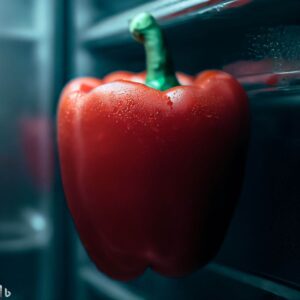
Understanding Bell Peppers
A Brief of Bell Peppers
Bell peppers belong to the nightshade family and are scientifically classified as Capsicum annuum. These popular fruits – although commonly mistaken for vegetables – are native to Central and South America. Unlike their fiery counterparts, such as jalapenos or habaneros, bell peppers have a mild, sweet taste that complements a wide range of dishes. They are available in various colors, including green, red, yellow, orange, and even purple, each offering a slightly different flavor profile. Bell peppers are typically crisp and crunchy, making them perfect for eating raw in salads, stuffing, grilling, roasting, or adding to stir-fries and sauces.
Varieties of Bell Peppers
Bell peppers come in different shapes, sizes, and colors, with each variety possessing its own unique characteristics. Some popular varieties include:
- “California Wonder”: This classic bell pepper variety is widely grown for its large, blocky fruits and mild flavor. It starts off green and gradually ripens to red.
- “Purple Beauty”: As the name suggests, this variety showcases vibrant purple bell peppers that add a pop of color to any dish. They have a slightly sweeter taste compared to green bell peppers.
- “Golden Bell”: Offering a sunny yellow hue, golden bell peppers are known for their sweet and crisp flesh. They are particularly rich in vitamin C and add a vibrant touch to salads and stir-fries.
- “Chocolate Beauty”: This unique variety surprises with its deep brown color, which intensifies as the pepper matures. With a sweeter flavor profile and rich earthy undertones, chocolate beauty bell peppers are perfect for roasted or grilled dishes.

Nutritional Benefits of Bell Peppers
In addition to their vibrant colors and flavors, bell peppers also boast an impressive array of health benefits.
- Vitamin A: Bell peppers, especially the red and yellow varieties, are rich in beta-carotene, a form of vitamin A that supports eye health and overall immunity.
- Vitamin C: With a higher vitamin C content than oranges, bell peppers play a crucial role in collagen production, wound healing, and the body’s defense against oxidative stress.
- Potassium: This essential mineral helps maintain proper muscle and nerve function, as well as regulate blood pressure levels.
Including bell peppers in your diet is an excellent way to achieve a well-rounded and nutritious meal.
Preparing for Cultivation
Before diving into bell pepper cultivation, it is essential to prepare the right environment, assess the necessary equipment, and ensure the quality of the seeds.
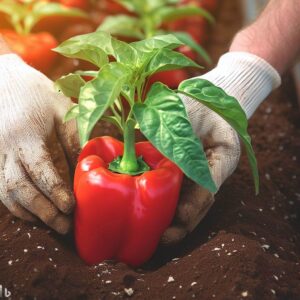
Selecting the Right Location
Bell peppers thrive in warm and sunny environments, making it crucial to choose a location that receives at least 6-8 hours of direct sunlight per day. Additionally, they prefer well-drained soil with a pH level between 6.0 and 7.0. Choose a spot in your garden or patio that offers these conditions to give your bell pepper plants the best chance of success.
Preparation and Testing
To ensure optimal growing conditions for your bell peppers, it is advisable to prepare the soil by incorporating organic matter, such as compost or aged manure, into the planting area. its help to improve soil , fertility, and moisture. Additionally, conducting a soil test can provide valuable insights into any nutrient deficiencies or pH imbalances present in the soil, allowing you to adjust accordingly.
Equipment Required
To embark on your bell pepper cultivation journey, you’ll need a few essential tools and supplies:
- Garden trowel: Useful for digging holes and transplanting seedlings.
- Watering can or hose: To provide regular irrigation for your plants.
- Fertilizer: Choose a balanced organic fertilizer to nourish your bell pepper plants throughout their growth.
- Mulch: Applying organic mulch around the base of the plants helps conserve moisture, suppress weeds, and maintain a consistent soil temperature.
Having these tools readily available will streamline your gardening process and set you up for success.
Starting Bell Pepper Seeds
To kick start the cultivation of bell peppers, beginning with high-quality seeds and providing the right conditions for germination are essential steps.
Sourcing Quality Seeds
When selecting bell pepper seeds, opt for reliable seed suppliers or trusted nurseries to ensure their viability and authenticity. Look for reputable brands or check customer reviews to make an informed decision. Additionally, consider using heirloom seed varieties for a diverse range of flavors and colors.
Germinating Seeds Indoors
To increase your success rates, it is often recommended to start bell pepper seeds indoors. This method allows you to control environmental factors such as temperature and moisture, providing a conducive environment for germination. Use seed-starting trays or pots filled with a sterile seedling mix. Sow the seeds about ¼ inch deep, keeping them evenly spaced, and lightly cover them with the growing medium. Maintain a consistent temperature of around 70-80°F (21-27°C) and keep the soil evenly moist.
Planting Seedlings
After germination, it’s time to transplant the seedlings into larger containers or directly into the garden once the risk of frost has passed. Ensure the seedlings are at least 6-8 weeks old before transplanting, as this will give them adequate time to grow strong and establish their root systems. Carefully loosen the soil and plant the seedlings at the same depth they were growing previously.
By following these steps, you’ll set the foundation for healthy bell pepper plants and a successful cultivation journey.
Bell Pepper Plant Care – Ideal Temperature and Sunlight Requirements
Creating the optimal growing conditions for your bell pepper plants is crucial for their well-being and productivity. Understanding their temperature and sunlight preferences allows you to provide the ideal environment.

Ideal Temperature Range
Bell peppers flourish in conditions with daytime temperatures ranging from 70-85°F (21-29°C) and nighttime temperatures approximately between 60-70°F (15-21°C). . These warm-loving plants are highly sensitive to frost, so it’s essential to protect them during colder periods, as even a light frost can cause damage. Consider covering the plants with frost cloths or bringing container-grown plants indoors overnight if temperatures drop significantly.
Sunlight Requirements
As mentioned earlier, bell peppers require ample sunlight to thrive. Aim to provide them with 6-8 hours of direct sunlight daily. If your growing area doesn’t receive enough natural light, consider using supplemental lighting, such as fluorescent or LED grow lights, to ensure they receive the necessary light spectrum for photosynthesis.-
Watering Techniques and Frequency
Proper watering is vital for bell pepper plants’ growth, and finding the right balance is key. Overwatering can lead to root rot and other fungal diseases, while under watering can result in stunted growth and fruit production.
Watering Frequency
Bell peppers prefer consistently moist soil, but not waterlogged conditions. Stick to a regular watering schedule, ensuring that the soil is moist but not saturated. Depending on the climate and soil conditions, you may need to water your plants 2-3 times per week, adjusting the frequency according to weather patterns and the plants’ individual needs.
Watering Techniques
When watering, aim to keep the soil evenly moist while avoiding excessive splashing on the leaves. Drip irrigation or a soaker hose can be effective in providing slow, deep watering directly to the roots, promoting healthy growth.
Fertilizers and Nutrients
Providing your bell pepper plants with the necessary nutrients is essential for a successful cultivation journey. Understanding the nutritional needs and using appropriate fertilizers and amendments will ensure healthy growth and maximize yields.
Choosing the Right Fertilizer
When selecting fertilizers for your bell pepper plants, look for balanced organic fertilizers or slow-release options that provide a balanced combination of macronutrients and micronutrients. Choose a fertilizer with an NPK ratio (nitrogen, phosphorus, and potassium) of around 10-10-10 or similar, as this will support overall plant growth, flower development, and fruit production.
Fertilizing Schedule
To provide a steady and consistent supply of nutrients to the plants, incorporate a fertilizer schedule throughout the growing season. Start by applying a balanced fertilizer when transplanting or once the seedlings have become established. Repeat the application every 4-6 weeks or as directed by the fertilizer manufacturer.
Nutrient Deficiencies
Keep a keen eye on your bell pepper plants for any signs of nutrient deficiencies. Common nutrient deficiencies in bell peppers include:
Nitrogen deficiency:
Symptoms include pale leaves, stunted growth, and reduced overall vigor. Apply a nitrogen-rich fertilizer to address this issue.
Phosphorus deficiency:
Leaves may exhibit a purplish discoloration, and plants may have poor fruit production. Use a phosphorus-rich fertilizer or bone meal to supply the necessary phosphorus.
Potassium deficiency:
Yellowing or scorched edges on older leaves indicate potassium deficiency. Apply a potassium-rich fertilizer or amend the soil with wood ash to remedy this issue.
By maintaining a nutrient-rich growing environment, you’ll ensure your bell pepper plants have everything they need to thrive.
Pest and Disease Control
Protecting your bell pepper plants from pests and diseases is crucial to maintain their health and maximize yields. By implementing preventive measures and utilizing natural control methods, you can minimize the impact of these potential threats.
Common Pests to Watch For
Aphids:
These small, soft-bodied insects feed on the sap of plants, causing curling leaves and stunted growth.
Spider mites:
These tiny arachnids cause leaves to appear stippled or discolored. Frequent misting of the leaves and applying neem oil can help control spider mite infestations.
Cutworms:
These caterpillar larvae feed on the base of young plants, severing stems and causing plants to wilt. Protect the base of your plants with collars made from cardboard or aluminum foil to prevent cutworm damage.
Slugs and snails:
These slimy pests can cause extensive damage to bell pepper foliage. Use organic slug baits or create barriers with crushed eggshells or diatomaceous earth to deter them.
Natural Pest Control Methods
In addition to using specific treatments for specific pests, employing natural pest control methods can help maintain a healthy balance in your garden:
Companion planting:
Planting herbs like basil, mint, or marigolds near bell pepper plants can help repel pests thanks to their strong scent or natural compounds.
Biological control:
Introduce beneficial insects such as ladybugs, lacewings, or predatory mites, which feed on common garden pests, providing natural control.
Integrated pest management (IPM):
Implementing IPM strategies, such as regular scouting, identifying pest thresholds, and using the least invasive methods first, can help manage pest populations effectively.
Preventing Diseases and Disorders
Alongside combating pests, being proactive in preventing diseases and disorders is essential for maintaining healthy bell pepper plants.
Fungal diseases:
To prevent fungal diseases like powdery mildew or leaf spot, ensure proper air circulation, avoid overhead watering, and apply organic fungicides, if necessary.
Bacterial diseases:
Implement effective sanitation practices by removing and disposing of infected plant debris, practicing crop rotation, and providing proper spacing between plants to reduce the risk of bacterial diseases.
Viral diseases:
Viruses affecting bell pepper plants are often transmitted by insects, so controlling vector populations and promptly removing infected plants can help prevent the spread of viral diseases.
By following these preventive techniques, you’ll significantly reduce the chances of pest and disease-related issues, fostering healthier plants.
Pruning and Bell Pepper Plants
Understanding the benefits of pruning and utilizing proper techniques for bell pepper plants are key components in maintaining plant vitality and optimizing fruit production.
Understanding the Importance of Pruning
Pruning bell pepper plants serves several purposes, including:
Enhancing airflow:
Proper pruning improves air circulation, reducing the likelihood of fungal diseases and foliar problems.
Enhancing light penetration:
Pruning allows sunlight to reach lower foliage, encouraging robust growth and preventing energy waste on shaded leaves.
Managing plant size:
Pruning helps control the size and shape of the plants, ensuring they don’t overshadow neighboring crops or become overcrowded.
Techniques for Pruning Bell Pepper Plants
To successfully prune bell pepper plants, follow these techniques:
Removal of suckers:
Suckers, the sprouts that emerge from the leaf axils, can divert energy from fruit production. Pinch or cut them off to direct energy towards developing fruits.
Trimming non-productive branches:
Identify branches that are not bearing fruit or those that are becoming crowded. Prune them back to the main stem to redirect energy to more productive areas.
Maintaining a single stem:
Some gardeners prefer to train bell pepper plants to a single main stem. This technique involves removing lateral branches and maintaining a central leader. It may require staking or trellising for support.
Utilizing Supports and Trellises
As bell pepper plants grow, they may benefit from additional support provided by stakes or trellises. Supporting your plants offers various advantages, including:
Reducing risk of pests and disease:
Elevated plants encounter fewer soil-borne pests and have improved air circulation, minimizing the risk of diseases.
Preventing fruit rot:
Supporting the plants helps keep the fruits off the ground, reducing the chances of rot or damage.
Maximizing space:
By training bell pepper plants vertically, you can maximize space utilization in small gardens or containers.
Choose sturdy stakes or trellises made of materials such as bamboo or metal wire cages. As the plants grow, gently tie or secure the stems to the supports using soft twine or plant ties.
Staking and Supporting Techniques
In addition to general support, implementing specific staking and supporting techniques can contribute to healthier plants and bountiful harvests.
Choosing the Right Support Structures
Selecting appropriate support structures helps maintain the plant’s stability, secures heavy fruit loads, and supports healthy growth. Depending on your preference and available resources, options include:
Individual stakes:
Place a sturdy stake next to each bell pepper plant and gently tie the main stem to the stake as the plant grows.
Trellising:
Create a trellis system, whether it’s a simple vertical framework or a more elaborate netting structure, for multiple bell pepper plants to grow along.
Cages or cages with stakes:
Surround each plant with a wire cage or cage with a stake, providing 360-degree support for the plant as it grows and branches out.
Staking Methods for Healthy Growth
Proper staking techniques are crucial to ensure the health and vigor of bell pepper plants. Follow these steps for successful staking:
- Place stakes firmly in the ground next to the plants.
- As the plants grow, loosely tie the main stem to the stake approximately every 6-8 inches (15-20 cm) using soft twine or plant ties. Be careful not to constrict or damage the stem.
- Utilize additional ties or clips to secure any lateral branches that may need extra support or become weighed down with fruit.
Conclusion:
Mastering the art of bell pepper cultivation requires careful attention to various factors, but the rewards are well worth the effort. By following the tips and techniques mentioned above, you can significantly increase your chances of achieving a successful harvest of healthy and vibrant bell peppers. Remember to provide the right growing conditions, such as adequate sunlight, well-draining soil, and proper watering. Regularly inspect and address any pest or disease issues promptly to maintain the plants’ health.
FAQs (Frequently Asked Questions):
How long does it take for bell peppers to grow from seeds?
On average, bell peppers take about 60 to 90 days to reach maturity from seeds. However, this can vary depending on the specific variety, growing conditions, and climate.
Should I start bell pepper seeds indoors or directly sow them outside?
Starting bell pepper seeds indoors is generally recommended, especially in cooler climates, as it gives the young plants a head start before transplanting them outside. This helps ensure a longer growing season and higher chances of successful fruit production.
Can bell peppers tolerate frost?
No, bell peppers are sensitive to frost and can be damaged or killed by cold temperatures. It’s crucial to protect them from frost by covering the plants or bringing them indoors during colder nights.
How often should I water bell pepper plants?
Bell peppers prefer consistent moisture, but overwatering should be avoided as it can lead to root rot. Generally, watering them deeply once or twice a week is sufficient, depending on weather conditions and soil type.
Are bell peppers prone to pests and diseases?
Yes, like any other plants, bell peppers can be susceptible to various pests and diseases. Common issues include aphids, caterpillars, and fungal diseases. Regular monitoring, early detection, and appropriate treatments, such as organic pesticides or cultural practices, can help manage these problems effectively.
Can I save seeds from my bell peppers for the next planting season?
Yes, you can save seeds from mature bell peppers for the next planting season. To do this, simply extract the seeds, allow them to dry thoroughly, and store them in a cool, dry place until you’re ready to sow them again.

